ISSN ONLINE(2319-8753)PRINT(2347-6710)
ISSN ONLINE(2319-8753)PRINT(2347-6710)
| N. Kiran Kumar, I.E.S. Naidu Department Electrical & Electronics Engineering, GITAM University, Visakhapatnam, India |
| Related article at Pubmed, Scholar Google |
Visit for more related articles at International Journal of Innovative Research in Science, Engineering and Technology
In an interconnected power system, as a power load demand varies randomly both area frequency and tie-line power interchange also vary. The objectives of load frequency control (LFC) are to minimize the deviations in these variables (area frequency and tie-line power interchange) and to ensure their steady state errors to be zero. In this area of energy crisis, renewable energy is the most promising solution to man’s ever increasing energy needs. But the power production by these resources cannot be controlled unlike in thermal plants. As a result, standalone operation of renewable energy is not reliable. Hence grid-connection of these along with conventional plants is preferred due to the improved performance in response to dynamic load. It is observed that fluctuations in frequency caused due to load variations are low with increase in penetration of renewable resources. Load frequency control (LFC) including PID controller is proposed in order to suppress frequency deviations for a power system involving wind, hydro and thermal plants owing to load and generating power fluctuations caused by penetration of renewable resources. A system involving two thermal plants, a wind farm and a hydro plant will be modelled using MATLAB.
Index Terms |
| Distributed power generation, load frequency, Control (LFC), wind power, hydro power, and thermal power plants. |
NOMENCLATURE |
| ΔPC Command signal |
| ΔF Change in Frequency |
| ΔYE Changes in steam valve opening |
| R Speed regulation of the governor |
| Ksg Gain of speed governor |
| Tsg Time constant of speed governor |
| Rp Permanent droop |
| Rt Temporary droop |
| Tg Main servo time constant |
| D Change in load with respect to frequency |
| Tw Water starting time |
| Tr Reset time |
INTRODUCTION |
| The high Indian population coupled with increase in industrial growth has resulted in an urgent need to increase the installed power capacity. In India, majority of power production, around 65 per cent is from thermal power stations. Due to problems related to uncertainty in pricing and supply of fossil fuels, renewable resources have been identified as a suitable alternative like solar, wind, and biogas plants are using in recent days. However, standalone operation of renewable resources is not reliable as they are intermittent in nature. The intermittent nature of resource increases the frequency deviations which further add to the deviation caused by load variation. This necessitates the grid connection of renewable resources wind and solar. |
| Frequency deviation is undesirable because most of the AC motors run at speeds that are directly related to frequency. Also the generator turbines are designed to operate at a very precise speed. Microcontrollers are dependent on frequency for their timely operation. Thus it is imperative to maintain system frequency constant. This is done by implementing Load Frequency Control (LFC). There are many LFC methods developed for controlling frequency. They include flat frequency control (FFC), tieline bias control (TBC) and flat tie-line control (FTC). In FFC, Some areas act as load change absorbers and others as base load. |
| The advantage is the higher operating efficiencies of the base load as they run at their maximum rated value at all times. But the drawback here is the reduced number of areas absorbing load changes which makes the system more transient prone. In FTC load changes in each area are controlled within the area, thereby maintaining tie line frequency constant. The most commonly used method is the tie-line load bias control in which all power systems in the interconnection aid in regulating frequency regardless of where the frequency change originates. In this project, the power system considered has a Thermal system with four thermal areas, a Hydro plant and a wind farm. |
MODELING OF THERMAL AREAS |
| The thermal areas have been modelled using transfer function. Speed governor, turbine and generator constitute the various parts namely the speed governing system, turbine model, generator load model [7]. |
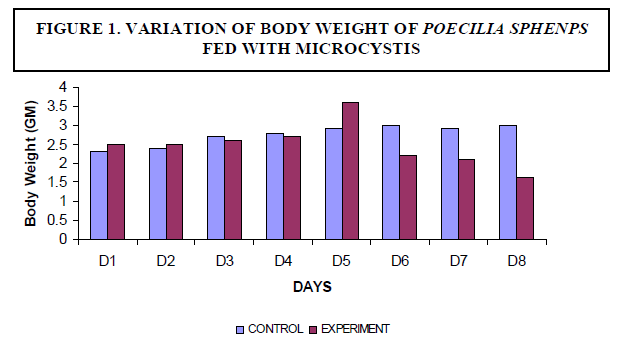 |
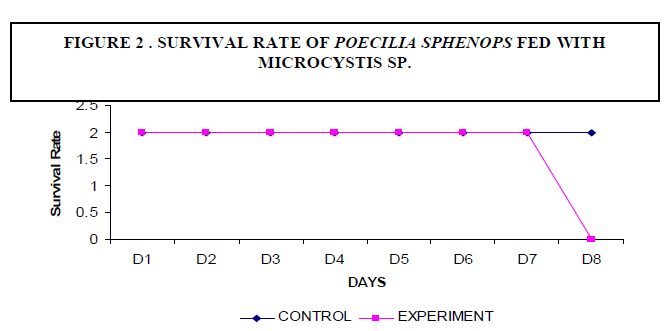 |
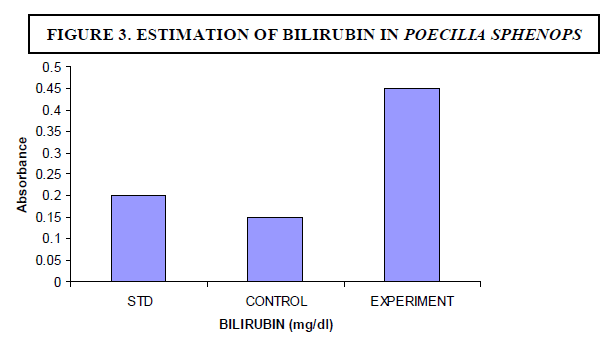 |
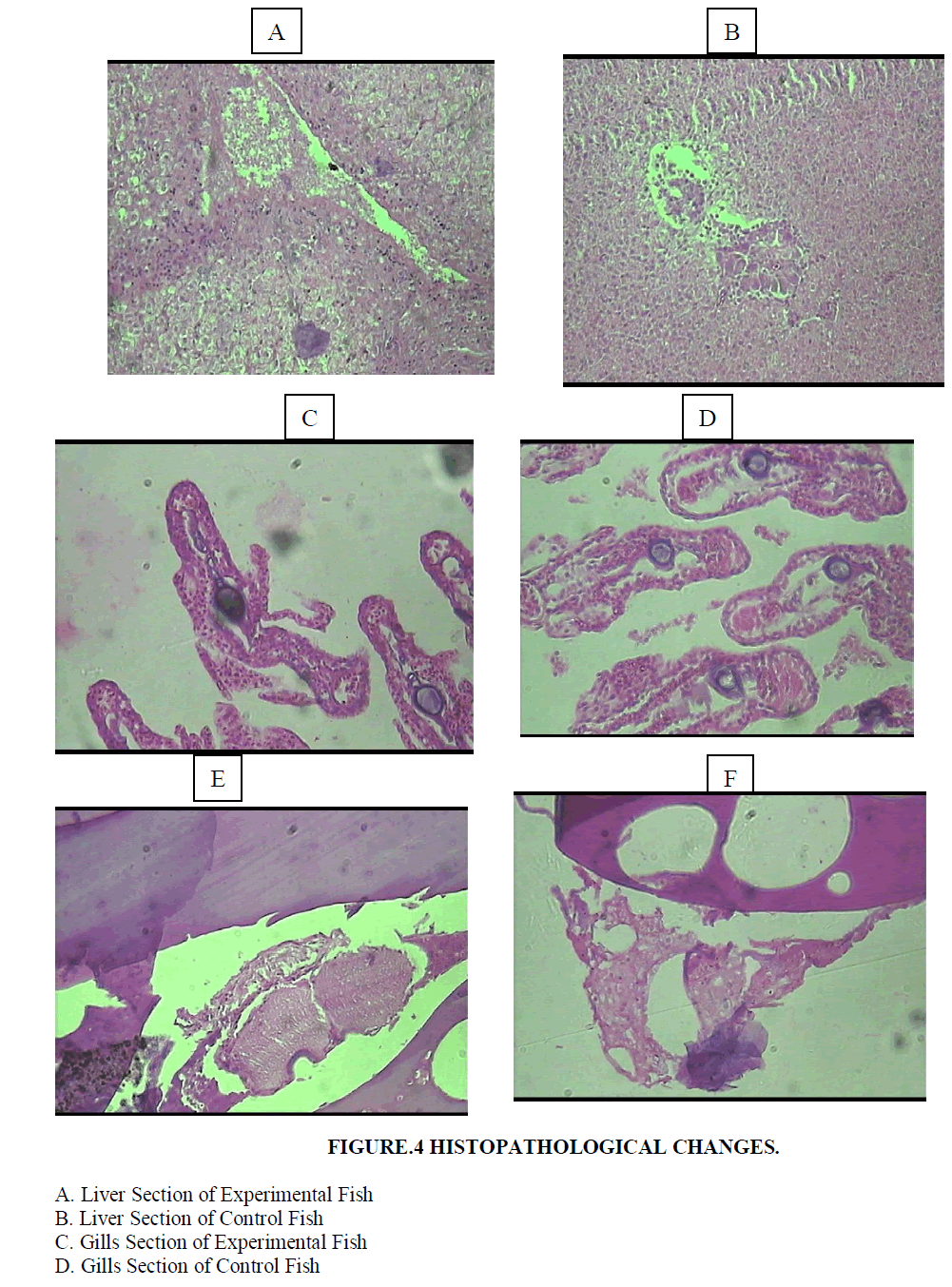 |
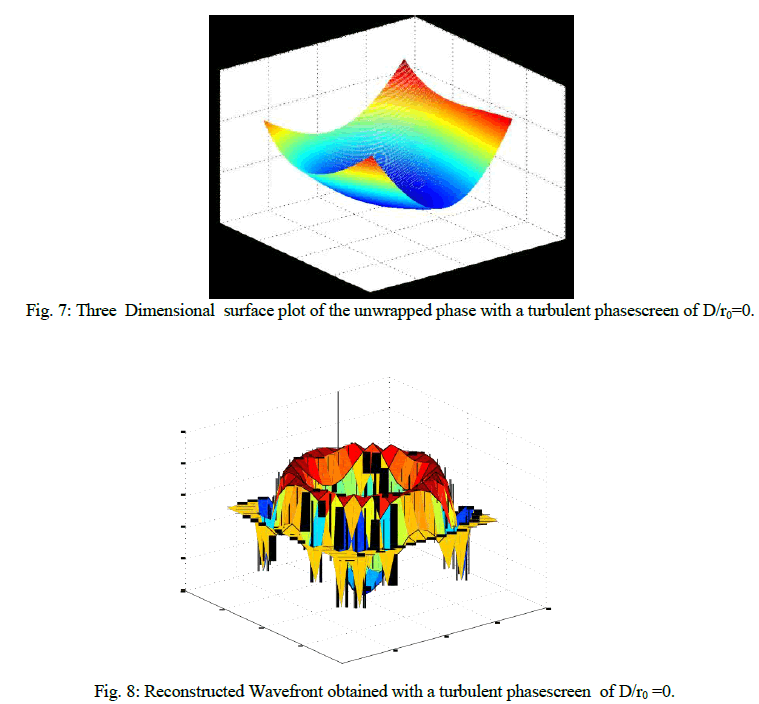 |
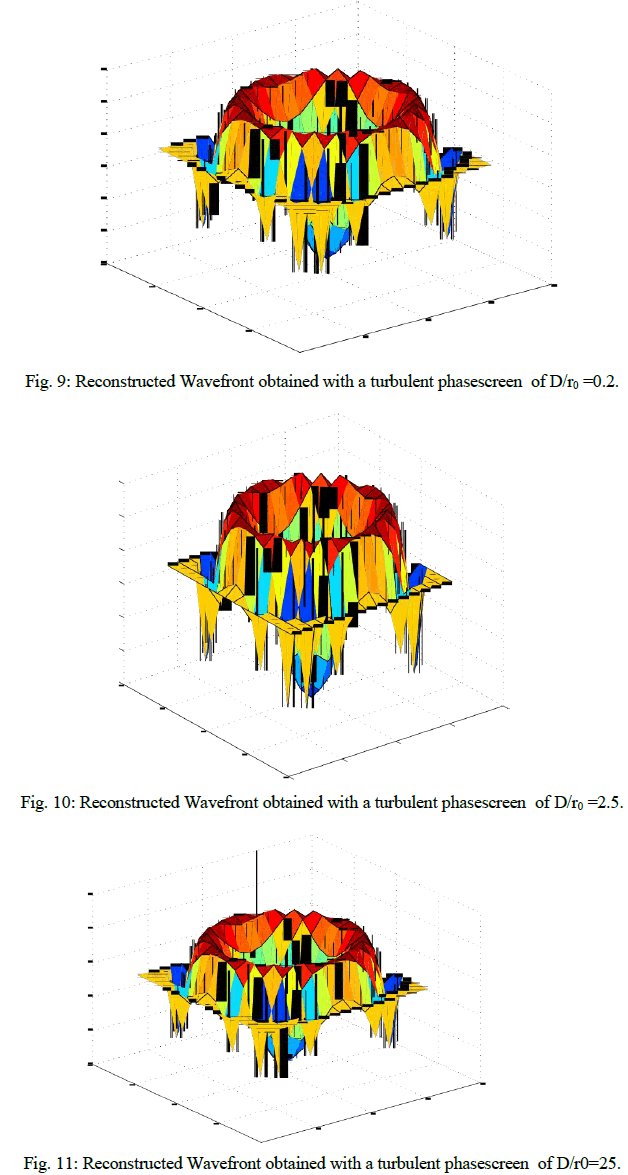 |
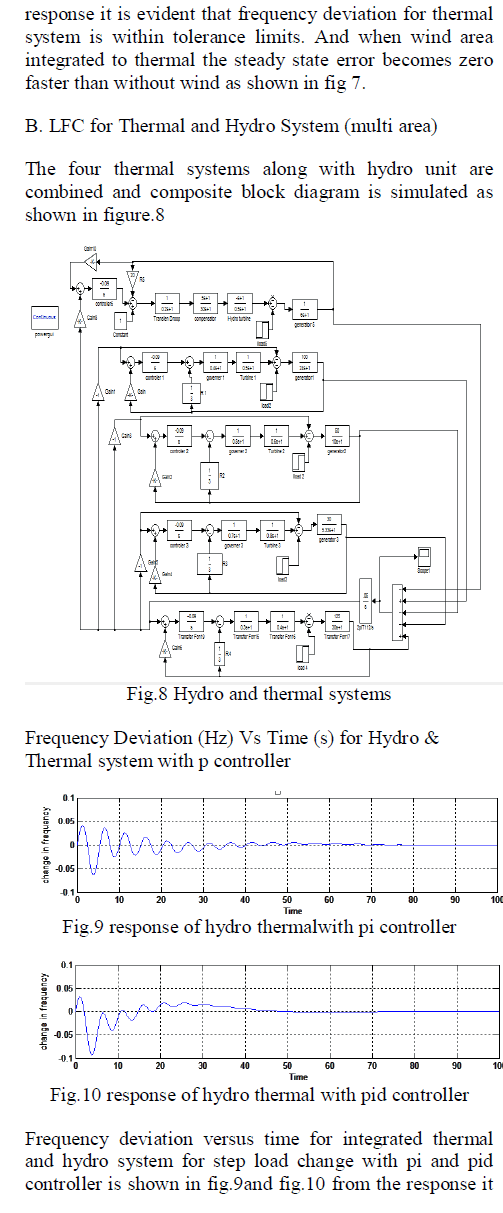 |
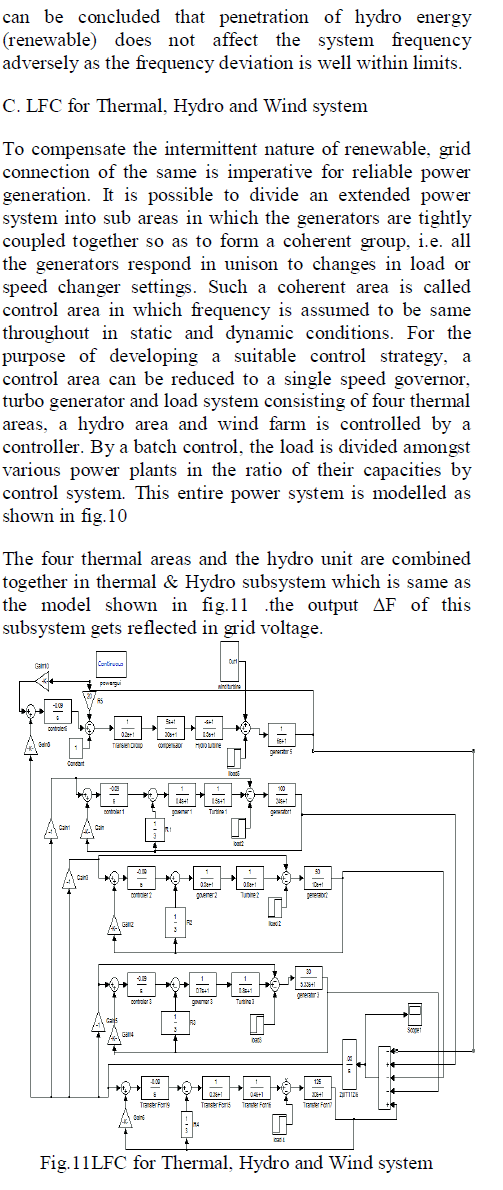 |
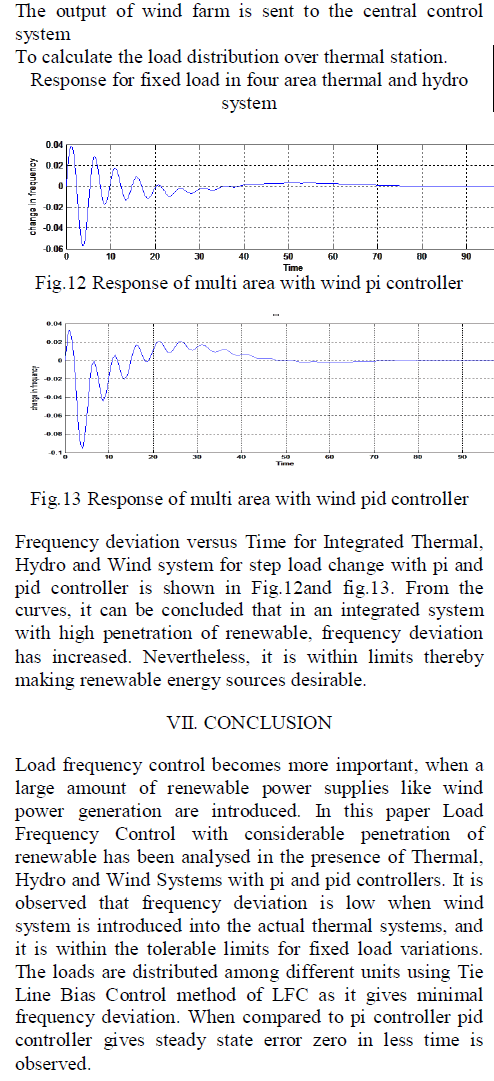 |
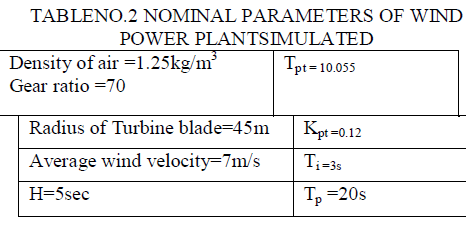 |
References |
|